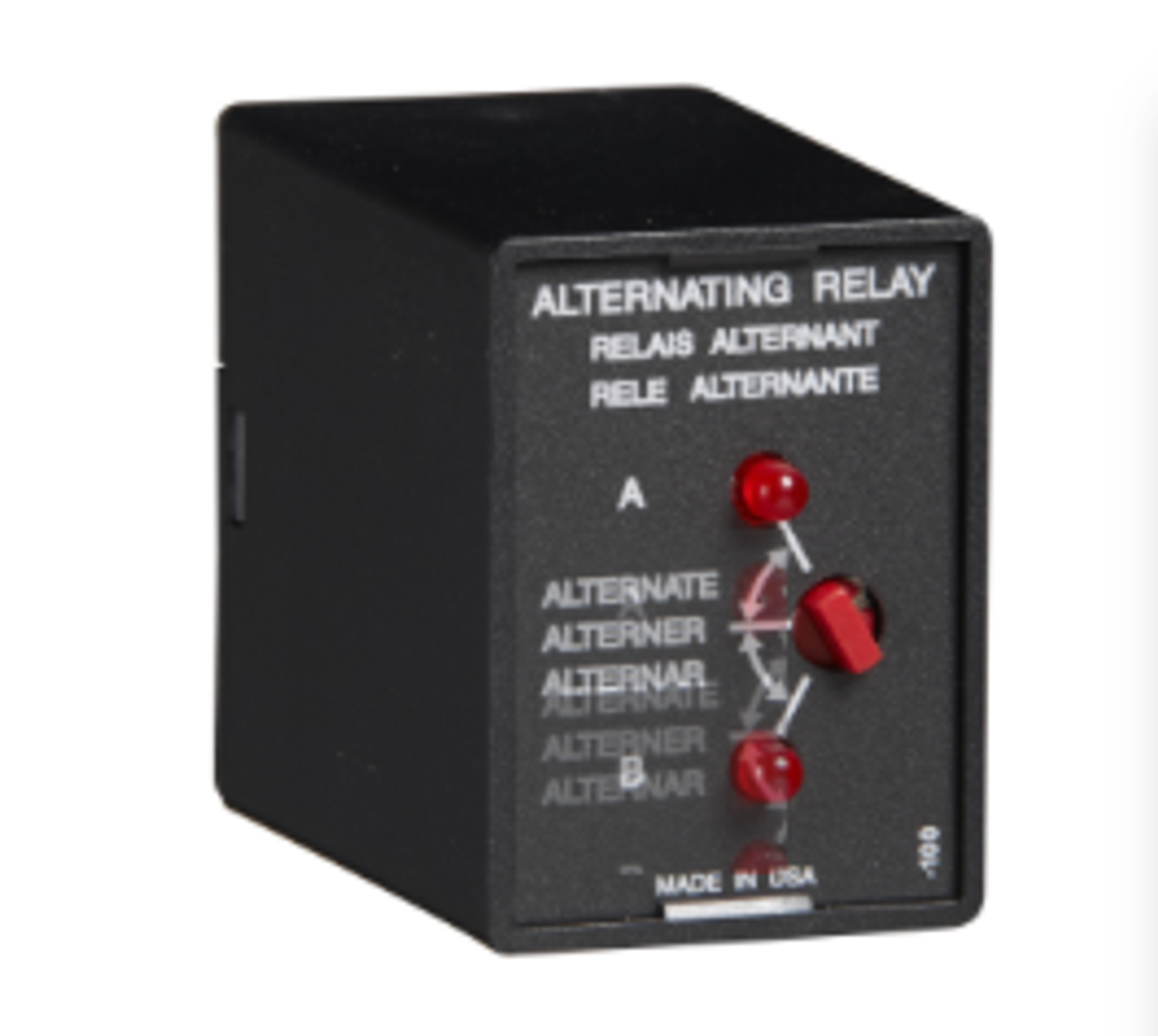Product Description
Description: Relays • Alternating Sequencing Relay • Coil Voltage: 24; 120; 230 Vac • Contact Configuration; SPDT; DPDT; cross wired DPDT • Output Current ; 10 Amps • Mounting; Plug-In (8-Pin Octal) • Selector Switch ; ? • Notes:; Used in systems where equal run time for two motors is desirable.
| Product Information | | Resources |
| Manufacturer | SSAC - Littelfuse | | Product Category | Relays | | Product Sub Category | Alternating Sequencing Relay | | Series | ARP Series |
| | |
Product Attribute
| Attribute Value
|
| Coil Voltage | 24; 120; 230 Vac |
| Contact Configuration | SPDT; DPDT; cross wired DPDT |
| Output Current | 10 Amps |
| Mounting | Plug-In (8-Pin Octal) |
| Selector Switch | ? |
| Notes: | Used in systems where equal run time for two motors is desirable. |
| Alternating Relay / Motor Duplexor |
| Series Description: The ARP Series is used in systems where equal run time for two motors is desirable. The selector switch allows selection of alternation or either load for continuous operation. LED's indicate the status of the output relay. This versatile series may be front panel mounted or 35 mm DIN rail mounted |
Operation: Alternating: When the rotary switch is in the alternate position, alternating operation of Load A and Load B occurs upon the opening of the control switch S1. To terminate alternating operation and cause only the selected load to operate, rotate the switch to position A to lock Load A or position B to lock Load B. The LEDs indicate the status of the internal relay and which load is selected to operate.
Note: Input voltage must be applied at all times for proper alternation. The use of a solid-state control switch for S1 may not initiate alternation correctly. S1 voltage must be from the same supply as the units input voltage (see connection diagrams on datasheet). Loss of input voltage resets the unit; Load A becomes the lead load for the next operation.
Duplexing (Cross Wired): Duplexing models operate the same as alternating relays and when both the Control (S1) and Lag Load (S2) Switches are closed, Load A and Load B energize simultaneously.
The DPDT 8-pin, cross-wired option, allows extra system load capacity through simultaneous operation of both motors when needed. Relay contacts are not isolated. |
- Provides Equal Run Time for Two Motors
- Alternating or Electrically Locked Operation
- Low Profile Selection Switch
- 10 A Relay Contacts
- LED Status Indication
- Industry Standard Base Connection
|


